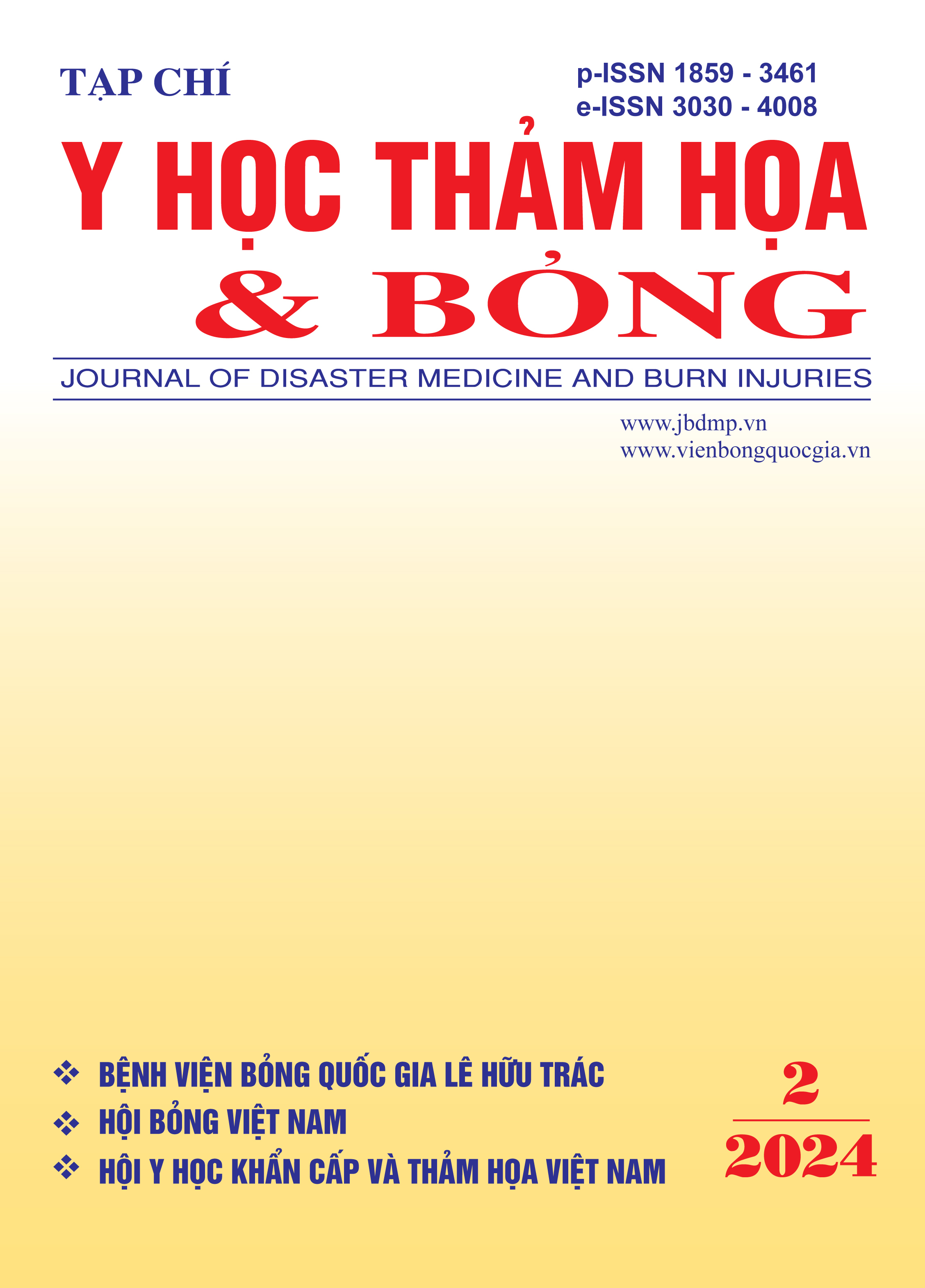Knowledge, practice and some factors related to wound care of students at the Ngo Gia Tu College, Bac Giang in 2022
Main Article Content
Abstract
The study aims to describe the knowledge, practice and factors related to knowledge and practice of wound care of students at the Ngo Gia Tu College, Bac Giang in 2022.
Research method: Cross-sectional description conducted on 71 students practicing at Bac Giang Provincial General Hospital.
Results: 80.3% of students had a total score of passing the general knowledge section on changing bandages, on the other hand, the number of students who did not pass accounted for 19.7%.
Students' practice of changing bandages follows the steps: wearing a mask; Wash the wound in order; Hand hygiene before, during and after completing the dressing change process: Reached a very high rate, from 77.5% - 88.7%; Meanwhile, the practical content only achieved a low rate, from 38.0% to 49.3%.
The percentage of second-year students achieving dressing changes (87.8%) was higher than that of first-year students (63.6%), a statistically significant difference with p < 0.05. As for the characteristics of age, gender, training major, training system: there is no difference (p > 0.05).
Conclusion: The percentage of students with satisfactory knowledge about wound care was 80.3%. The rate of students achieving wound care practice is 66.2%. Year of study was statistically associated with students' knowledge of wound care. Age, field of training, training system, time of study and knowledge have a statistically significant relationship with wound care practice skills with p < 0.05.
Second-year students have a higher knowledge achievement rate than first-year students (p < 0.05). Age, field of training, training system, time of study and knowledge have a close relationship with practical bandage changing skills, the difference is statistically significant with p < 0.05.
Article Details
Keywords
Knowledge, practice, student
References
2. Ngô Thị Huyền (2012), Kiến thức, thái độ, thực hành thay băng vết thương của Điều dưỡng, Kỹ thuật viên và tìm hiểu một số yếu tố liên quan tại các khoa lâm sàng Bệnh viện Việt Đức năm 2012, Luận văn thạc sĩ, trường Đại học Y tế công cộng.
3. Phạm Thị Nhuyên và cộng sự (2020). Thực trạng thực hiện quy thay băng - rửa vết thương sau mổ của sinh viên ngành Điều dưỡng Trường kỹ thuật y tế Hải Dương tại khoa ngoại bệnh viện đa khoa tỉnh Hải dương năm 2020. Tạp chí Khoa học Việt Nam trực tuyến.
4. Hoàng Thị Phương (2018), Thực trạng kiến thức và thực hành thay băng của Điều dưỡng ngoại Bệnh viện nhi Thanh Hóa năm 2018, Luận văn thạc sĩ, trường Đại học Điều dưỡng Nam Định.
5. Trịnh Văn Thọ (2021). Thực trạng chăm sóc vết mổ nhiễm khuẩn của điều dưỡng bệnh viện đa khoa Xanh Pôn năm 2021. Tạp chí Nghiên cứu khoa học, tập 05 - số 03, 2022.
6. Famakinwa T, Bello B, Oyeniran Y et al (2014). Knowledge and practice of post-operative wound infection prevention among nurses in the surgical unit of a teaching hospital in Nigeria. International Journal of Basic, Applied and Innovative Research, 3(1), 23-28.
7. Kolade O.A, AbubakarS, Adejumoke S.R et al (2017). Knowledge, attitude and practice of surgical siteinfection prevention among post-operative nurses in atertiary health institution in north-central Nigeria. International Journal of Nursingand Midwifery, 9(6), 65-69.
8. Mangram A.J, Horan T.C, Pearson M.L et al (2009). Guideline for prevention of surgical site infection. American journal of infection control, 27(2), 97-134.
9. Teshager F.A, Engeda E.H and Worku W.Z (2015). Knowledge, practice, and associated factors towards prevention of surgical site infection among nurses working in Amhara regional state referral hospitals, Northwest Ethiopia. Surgery research and practice, 1, 1-6.
10. World Health Organization (2016). Global guidelines for the prevention of surgical site infection.


